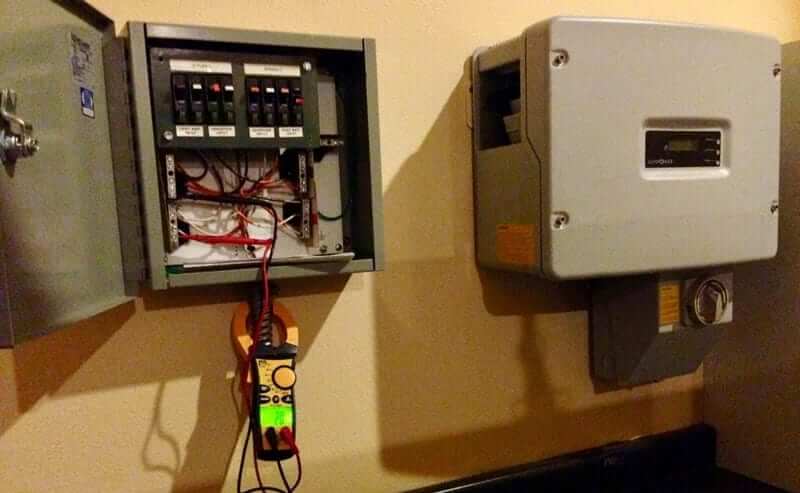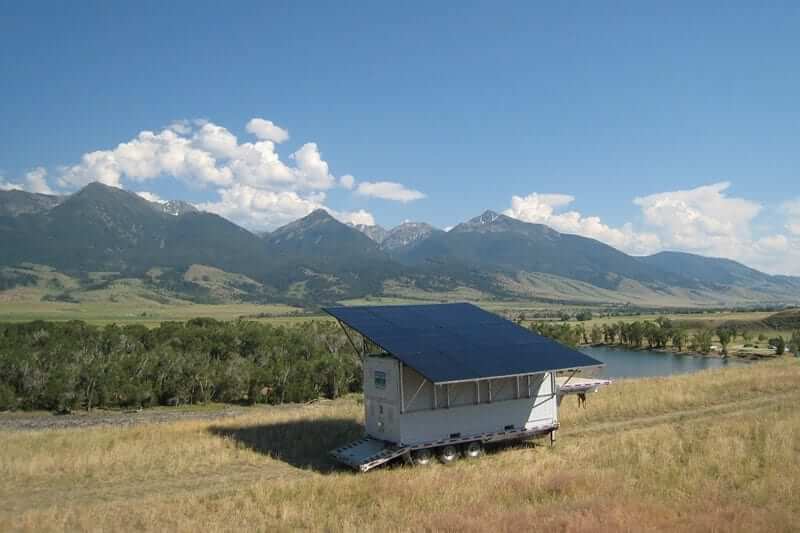Super Lunar Power – Moonlight and the Photoelectric Effect
If you looked at the Moon on the night of November 14, 2016, you may have noticed it appeared larger than normal. This “Supermoon” effect is due to the Moon being closest to Earth in its orbit at the same time it becomes a full moon.
Tony Boniface, the founder and owner of Independent Power and I set out, voltmeter in hand, to answer the following Supermoon inspired question:
Does Moonlight create a photoelectric effect on solar photovoltaic panels?
For our test, we hooked up the voltmeter to an array of nine, 210-watt solar panels. Before I let you know what we found, let’s jump into some quick background on how photovoltaic panels work, and why the Moon is bigger and brighter at some times than others.
EINSTEIN’S CONTRIBUTION TO THE SOLAR INDUSTRY
In 1921, Albert Einstein received the Nobel Prize in Physics for explaining the photoelectric effect. The photoelectric effect is a description of the natural phenomenon that is responsible for generating electricity when photovoltaic cells embedded in solar panels are exposed to sunlight.
Einstein was the first to suggest that light was both a wave and a particle. This duality of the behavior of light became fundamental to the fields of quantum mechanics and the development of solar photovoltaic cells. So the next time you see a solar panel, thank Dr. Einstein.
MOON … LIGHT …
Moonlight is the sunlight that is reflected off of the Moon’s surface. A full moon occurs when the Moon’s orbit brings it slightly above or below the Earth-Sun plane so that we see its light reflected fully. The Moon reflects about 3-12% of the sunlight that hits it, depending on the particular phase of the Moon as it orbits the Earth.
The Moon’s orbit also has a minor effect on how big the Moon appears in the sky, varying up to 14%. This variance is the difference between a Supermoon and a regular full moon.

OUR RESULTS
So, does the SuperMoon reflect enough light to power solar panels?
We measured the voltage produced by the solar panels during the historic November 14, 2016 SuperMoon rising to find out. The voltage increased as the Moon rose directly above the array.
On this event of the biggest, closest, and brightest SuperMoon since January 26, 1948, did we generate any useful energy from our solar panel array?
No, we did not. And frankly, not even enough energy was generated to ‘wake up’ the solar system’s power inverter, which is normally dormant at night.
But, we did observe a photoelectric effect – measuring 2.9 volts to be exact! This is about the voltage necessary to power an LED.
In solar power generation terms, that is barely a blip on the radar. But wait, if the Moon reflects about 3-12% percent of sunlight, why wasn’t more voltage produced? Well, it turns out that it would take almost 400,000 Moons to equal the brightness of the sun. (Which probably explains why you can stare at the Moon directly and not fry your retinas!)
There are more technical reasons to explain the non-linear relationship of reflected sunlight from the Moon and the amount of light that strikes the Earth, or in our case, the solar array. Tony suggested that light reflecting off the Moon is scattered due to its spherical shape, so we get very little of it; most of it scatters into space.
Meanwhile, I was lost in imagination, trying to picture what nighttime on Earth would be like if our Moon were say, the size of Earth. Then it hit me, astronaut Neil Armstrong would have experienced something like that while standing on the Moon! From the Moon, our Earth appears nearly four times larger than a full moon and can shine 45-100 times brighter than the full moon.
Even during a Supermoon, the Moon still doesn’t hold a ‘candle power’ to the light of the Sun!
SOME OTHER COOL SUN AND MOON FACTS
Did you know that:
- It takes 29.5 days for the Moon to make one complete rotation around the Earth
- We always see the same side of the Moon because the moon and the earth are tidally locked. This means the time the Moon takes to make one orbit around Earth is the same as its rotational period.
- There is no actual “dark side of the moon” since the Moon is constantly rotating on its own axis. The only time the far side of the moon is completely dark is during a full moon
- The Moon not only pulls on the Earth’s oceans but also the Earth’s crust, though this effect is so small as to be imperceptible to humans
- The Earth and Moon are closest to the sun in January at perihelion, and about 3 million miles further away in July at aphelion
- At its furthest distance, Earth is 94.5 million miles away from the sun
- It takes about 8 minutes for sunlight to reach the Earth’s surface


